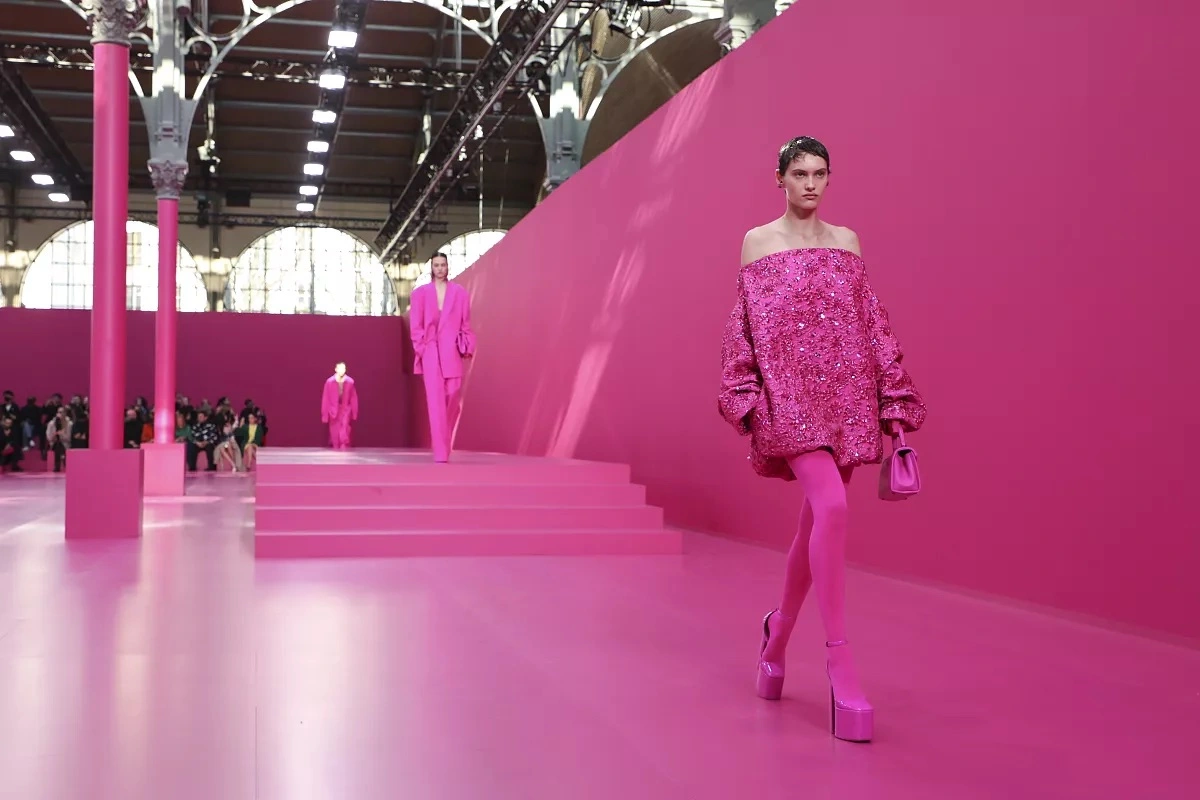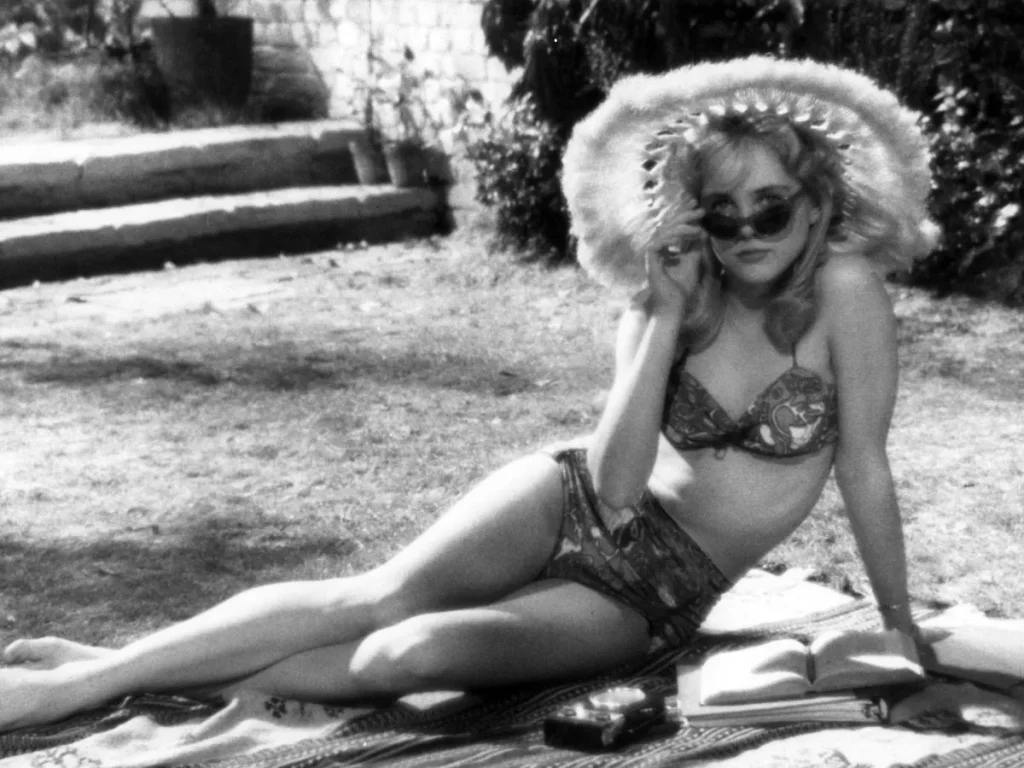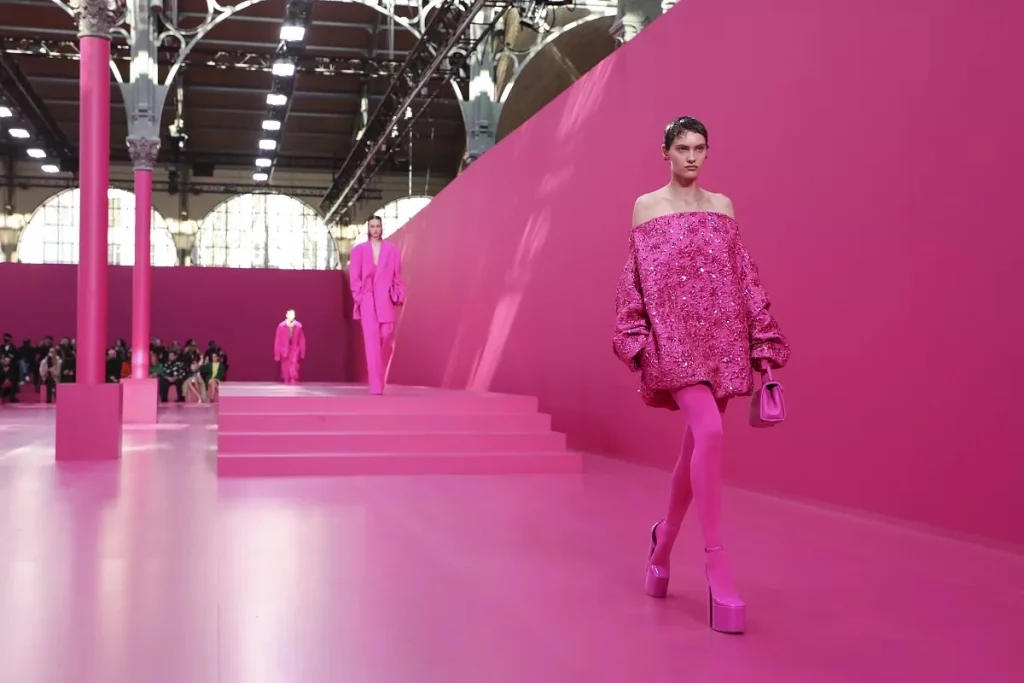Girly pop trend – When it comes to fashion, the internet can act like a liaison, allowing people to voice and find words for their feelings and identities and people to share these with
Girly girl style and Internet culture – The boom of hyper-feminine styles and micro trends over Tik Tok and Instagram
Suppose the algorithm has decided to put you in the fashion-related corner of social media. In that case, you have probably come across the various iterations of hyper-feminine styles and micro trends that have been taking over TikTok and Instagram for quite some time now. Outfits featuring bows, pastels, ruffles, and pinks seem to have expanded from little girls’ dreams to the wardrobes of internet fashionistas, who are embracing the ‘Girly girl style’.
In times we’ve become used to describing as ‘unprecedented’, many women and femme people seem to find comfort and a tool for self-expression in hyper-feminine clothes. The socio-economic and political climate influencing fashion and the rise and fall of trends is nothing new under the sun. Still, the increase in hyper-feminine trends shows how social media has changed the game, establishing themselves as major players in the world of fashion.
The viral girly pop ‘Selkie’ puff dress, corset-mania, and cottagecore – the rise of hyper-feminine styles
The origin of the ongoing hyper-feminine trend can be traced back to the year that needs no introduction: 2020. As people were stuck at home trying to find ways to cope with the psychological burden of social isolation, the need for escapism was at an all-time high.
That was the year when Cottagecore, the internet subculture that draws inspiration from an idealized bucolic life of times past, took over social media with its hashtag on TikTok, as of now, with fifteen-point-four billion views.
The popularity of this girly girl style trend, coupled with the influence of media coming out later that year, gave rise to another branch of the hyper-feminine loosely historically inspired trans that is still popular today: the so-called corset-craze. Plain, lingerie-inspired, or tapestry-inspired, this garment went from being a niche item amongst the girly pop entourage to the most popular accessory on the internet on the notes of the musical number Haus of Holbein by SIX, the sound of the ‘nine inches’ TikTok challenge.
In this escapism-hungry digital world, fashion companies that happened to match this aesthetics saw their fortunes rise. One brand that matched the fashion zeitgeist at the peak of the COVID-19 pandemic was the American brand Selkie. Named after the mythological creatures of Celtic and Norse legends and founded by artist, miniaturist, and designer Kimberley Gordon, Selkie had been around since 2018 but rose to internet popularity two years later when Selkie’s Puff Dress went viral online.
The confection-style baby-doll organza dress went viral on Tiktok, becoming an overnight cult fashion item whose cheaper replicas can be found virtually on any platform selling fast-fashion items online.
Girly girl style is more than a pandemic craze – hyper-feminine styles in 2023 and Sandy Liang
The popularity of girly pop items, styles, and brands hasn’t died with the peak of the COVID-19 pandemic but has continued to thrive online and offline. The movie Barbie by American director and actress Greta Gerwig about the titular doll has broken box office records and has earned its place as the pop culture sensation of 2023. Its ubiquity in the time leading up to its release in the summer has had a massive influence on this year’s fashion. Several fashion companies have released Barbie-themed collections, and people have sported Barbie-inspired pink, campy looks online and offline to the movies to participate in the collective Barbie craze.
The internet’s love for girly girl style styles has given New York-based label Sandy Liang plenty of buzz. Named after its founder, the brand has a distinctive girly pop aesthetic shaped by Liang’s own childhood in the neighborhood of Flushing, Queens, with bows, hearts, and stars acting as the brand’s leitmotifs. The brand, which has recently presented its latest ballet-core, bow, and flowers appliques rich collection for spring 2024 at the New York Fashion Week, has been a crowd-pleaser among New York fashionistas since the days of its leopard-print-and-neon fleece jacket.
Since then, it has also been sported by celebrities such as American actress Brie Larson and New York Times Bestselling author and vocalist of the band Japanese Breakfast, Michelle Zauner. Sandy Liang has collaborated with several brands over the years, including Vans. Still, its most recent and buzziest collaboration is with fellow AAPI-owned fashion brand and internet darling Baggu.
This highly anticipated drop, which included Baggu’s recycled nylon handbag decorated with Liang’s trademark bows on both sides, sold out on launch day, prompting the brands to plan a second release for later this year due to high demand. The New York brand success comes as no surprise in a time when the so-called ‘coquette aesthetic’ or girly pop aesthetic, is all the rage. This dainty and romantic aesthetic is named after the French word for ‘a woman who flirts’ and draws inspiration from a variety of 20th-century trends and the style of American singer Lana Del Rey.
Girly girl style and internet culture – ‘girl’ as the internet’s favorite keyword of 2023
The genesis of fashion trends doesn’t happen in a bubble, and the presence of multiple coincidence factors often determines trends’ popularity and longevity. Era-defining fashion items like the farthingale or crinoline would have arguably not risen to the level of popularity they enjoyed nor been invented in the first place in a time other than their own.
If fashion trends reflect the spirit and changes of an era, so do the internet and its culture. Internet Culture doesn’t self-generate, but it reflects a contorted picture of what’s already there, like a funhouse mirror.
If the word girl could be described as the internet’s favorite keyword of 2023, with the hashtag ‘#girldinner’ counting two billion views on TikTok, it’s because the current internet culture is reflecting our shifting ideas of womanhood in a world where what were considered the traditional marks of adulthood feel either outdated or unattainable.
While living the kind of adulthood older generations have led us to expect feels unfathomable in the midst of a cost-of-living crisis, we might still feel like we didn’t get to make the most out of the supposed ‘best years of our lives’.
You’re a girly pop – reclaiming girly girl style for self-empowerment through fashion
Many young people today lost a chunk of their teenage years or early twenties to the pandemic and became adults in a world that seems to bear few resemblances with that of our childhoods. This climate seems to have a growing impact on our mental health.
According to the Ipsos Global Health Service Monitor, people in thirty-one nations ranked mental health as the most urgent issue affecting their nation’s health, with stress-related worries becoming more prevalent, ranking third on the organization’s health concerns chart after cancer.
In uncertain times such as this, for young people, fashion and hyper-feminine, girly girl style can provide a form of escapism from the reality of everyday life and be a tool to reclaim the girly pop and live our own version of womanhood and adulthood.
Former girls, now adults whose girlhood was not recognized by their culture, families, or communities
For many young women who grew up in a time in which girlhood was demonized with the expression ‘like a girl’ thrown around like an insult and the media enjoyed by their demographic scrutinized and ridiculed, all for that girlhood to be taken from them too early by societal expectations, it makes sense to reclaim the joy, whimsy and self-expression of childhood.
Reclaiming girly girl style can be a tool of self-empowerment not only for cisgender women but also for the former girls, now adults whose girlhood was not recognized by their culture, families, or communities. The color pink, to which the capitalist-patriarchal system has given socially-constructed association with traditional heterosexual femininity, is being reclaimed and subverted by many queer women too.
Adult women and femme people wearing hyper-feminine styles – the Internet culture act like a liaison, beyond the confines of local communities
Adult women and femme people wearing hyper-feminine styles, pink, and other typical visual representations of femininity might seem like regression to some, but reclaiming femininity without the limitations that heterosexual patriarchy imposed on them is not a form of regression. It can be a tool to prioritize and re-take ownership of the self that that system of oppression stifles. If you’re a girly pop now is the time to embrace it.
The Internet culture, in this case, can act like a liaison, allowing people to voice and find words for their feelings and identities and people to share these with beyond the confines of their local communities, and if nobody around you, likes your girly girl style where you live, someone online will.
Sandy Liang
New York designer who draws inspiration from her childhood in 1990s New York City who started her label after graduating from Parsons in 2013.






















